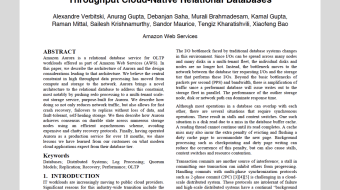Customer-obsessed science


Research areas
-
September 26, 2025To transform scientific domains, foundation models will require physical-constraint satisfaction, uncertainty quantification, and specialized forecasting techniques that overcome data scarcity while maintaining scientific rigor.
-
Featured news
-
2024Speech codec enhancement methods are designed to remove distortions added by speech codecs. While classical methods are very low in complexity and add zero delay, their effectiveness is rather limited. Compared to that, DNN-based methods deliver higher quality but they are typically high in complexity and/or require delay. The recently proposed Linear Adaptive Coding Enhancer (LACE) addresses this problem
-
2024The traditional cascading Entity Resolution (ER) pipeline suffers from propagated errors from upstream tasks. We address this issue by formulating a new end-to-end (E2E) ER problem, Signal-to-Entity (S2E), resolving query entity mentions to actionable entities in textual catalogs directly from audio queries instead of audio transcriptions in raw or parsed format. Additionally, we extend the E2E Spoken Language
-
2024Automated speaker identification (SID) is a crucial step for the per-sonalization of a wide range of speech-enabled services. Typical SID systems use a symmetric enrollment-verification framework with a single model to derive embeddings both offline for voice profiles extracted from enrollment utterances, and online from runtime utter-ances. Due to the distinct circumstances of enrollment and runtime, such
-
ECIR 20242024Off-policy evaluation (OPE) methods allow us to compute the expected reward of a policy by using the logged data collected by a different policy. However, when the number of actions is large, or certain actions are under-explored by the logging policy, existing estimators based on inverse-propensity scoring (IPS) can have a high or even infinite variance. Saito and Joachims [13] propose marginalized IPS
-
2024This paper proposes two novel variants of neural reprogramming to enhance wake word recognition in streaming end-to-end ASR models without updating model weights. The first, “trigger-frame reprogramming”, prepends the input speech feature sequence with the learned trigger-frames of the target wake word to adjust ASR model’s hidden states for improved wake word recognition. The second, “predictor-state initialization
Collaborations
View allWhether you're a faculty member or student, there are number of ways you can engage with Amazon.
View all














































